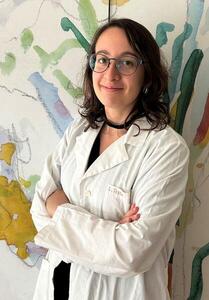Gruppo guidato da Alessandro Vercelli


Born in Bordighera (IM) on 20.07.1992 – Italian
Education
2023. PhD in Biochemistry (dept. Biomolecular Sciences), Weizmann Institute of Science, Rehovot- Israel
2016. Master’s Degree in Molecular and Cellular Medical Biotechnology (summa cum laude), Vita-Salute San Raffaele University, Milan - Italy
2014. Bachelor’s Degree in Medical and Pharmaceutical Biotechnology (summa cum laude), Vita-Salute San Raffaele University, Milan - Italy
Current position
2023-up to now. Post-doc Fellow, Department of Neuroscience Rita Levi Montalcini and Neuroscience Institute Cavalieri Ottolenghi (NICO), University of Turin, Italy. PI: Dr. Letizia Marvaldi
Previous positions
2017-2023. PhD student, Department of Biomolecular Sciences (Faculty of Biochemistry), Weizmann Institute of Science, Rehovot - Israel. PI: Prof. David Wallach, Prof. Jeffrey Gerst.
08/2016-01/2017. Visiting Scholar in the laboratory of Prof. David Wallach, Weizmann Institute of Science, Rehovot - Israel.
2015–2016. Master student, Department of Biology and Technology, Vita-Salute San Raffaele University, Milan - Italy. PI: Prof. Anna Rubartelli, Prof. Roberto Sitia.
04.2014–07.2014. Bachelor student, Department of Biology and Technology, Vita-Salute San Raffaele University, Milan - Italy. PI: Dr. Silvia Gregori.
Main research interest and expertise:
We are studying the biological basis of the pain that arise after nerve injury, known as neuropathic pain (NeuP). It is estimated that around 8% of the whole population suffers from NeuP, which is responsible for reduced quality of life and increased medical costs.
In our research, we focus our attention on the peripheral neurons located in the dorsal root ganglia (DRG neurons). These neurons innervate both the spinal cord and the skin/organs. When DRG neurons are damaged, they undergo changes that bring forth neuropathic pain. In particular, Importin α3-mediated nuclear import of AP-1 transcription factor is required in DRG neurons for the chronic NeuP signaling . We are now exploring if this is also required in the early phases of NeuP (i.e., few days after nerve injury) and which genes and proteins are actually important to establish NeuP condition.
My background is mainly in biochemistry, molecular biology and basic cell biology. In particular, I have experience in proteins isolation, purification and characterization. I employed extensively co-immunoprecipitation and SDS-PAGE assays. I performed nucleic acid extractions, PCR, bacterial transformation, plasmids purification and lentiviral vector production. I worked with primary and immortalized cell lines, from both human and murine origin, such as primary human monocytes from buffy coats and MEF cells. I extensively used CRISPR/Cas9 technology to generate new lines of human colon carcinoma cells (HT-29 cells) and also RNA interference to transiently modify the expression of protein of interest. I have practical experience with several cell death assays, cell fractionation procedures and immunostaining of endogenous proteins.
Role in research
While neuroscience is a novel field for me, I am using my background in biochemistry to investigate novel candidate proteins for their role in the DRG neurons signaling in NeuP. I am helping in the set up of the molecular biology assay.






